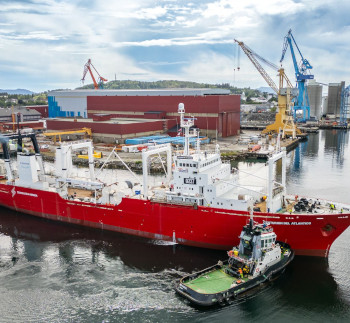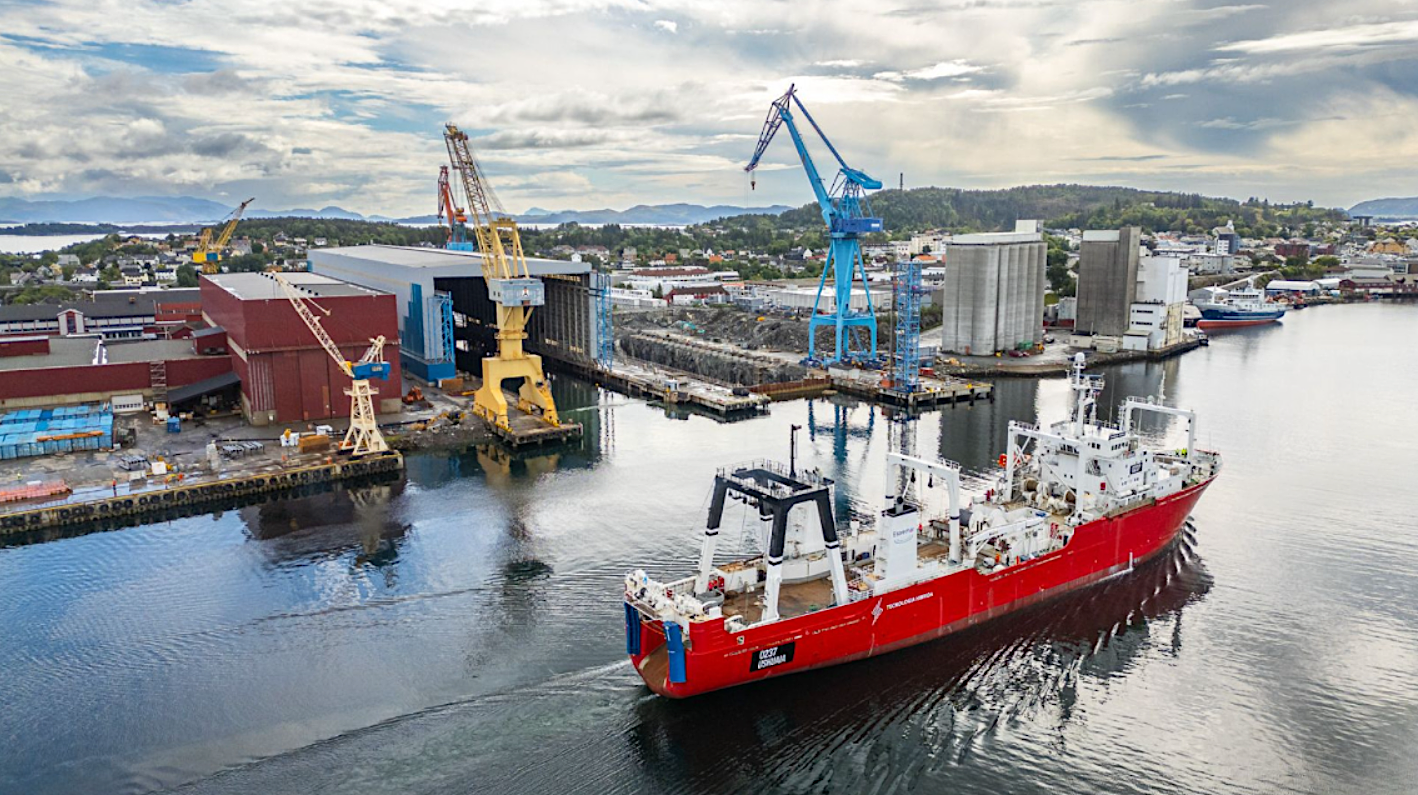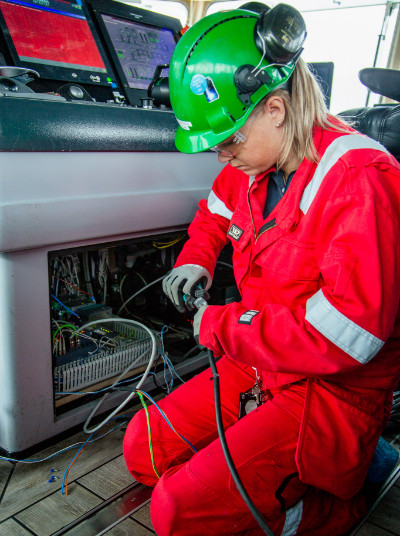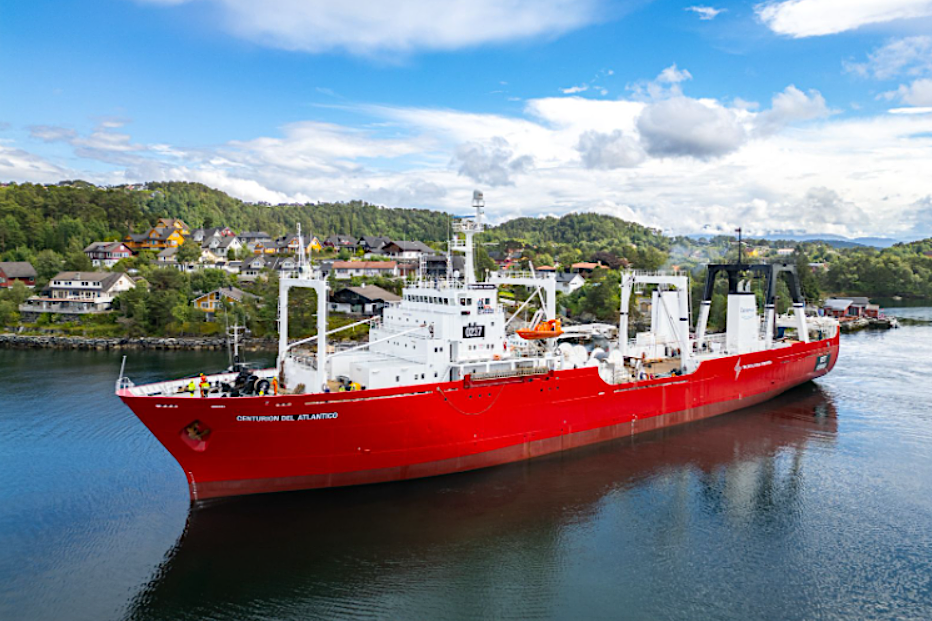|

Image: Westcon Shipyard / FIS
Coast Guard Oversees Modernization of Vessel to Reduce Carbon Emissions
 ARGENTINA
ARGENTINA
Thursday, June 20, 2024, 01:00 (GMT + 9)
The fishing vessel will have hybrid propulsion technology, which will reduce fuel consumption, emissions and operating hours of the diesel generators installed on board.
Specialized personnel from the Argentine Coast Guard analyzed and supervised the innovation, modification and technical updating work carried out on the Argentine flag factory fishing vessel “CENTURIÓN DEL ATLÁNTICO” (0237), which was developed at the Westcon Shipyards in the city of Florø. – Kingdom of Norway to reduce its carbon emissions.

Source: Ministerio de Seguridad / Prefectura Naval Argentina
In that sense, at the request of the shipping company Estremar S.A., the Force, Argentine Maritime Authority and the application of different international standards and treaties on the matter, also intervened in the risk analysis of the installed battery plant (hybrid propulsion technology ), prior to the issuance of the respective International Certificate to Prevent Air Pollution.
With this important renovation work, it is possible to reduce the ship's carbon footprint by approximately 40% and, since it is a unique model in its relationship with environmental protection, the improved hybrid electric power system (including installation of the battery system) will reduce fuel consumption, emissions and operating hours of the diesel generators installed on board.

Likewise, graphite lithium ion batteries show promise for reducing emissions from shipping.
The work has been carried out for more than ten months and currently the project is in its final stage, with the execution of the respective inspections by the Prefecture, because the ship has been equipped with a propulsion line completely modern hybrid that includes a new main engine (in addition to auxiliaries), a two-stage hybrid gearbox/gearbox coupled to a combined electric motor/tail generator, and a variable pitch propeller with nozzle for more efficient propulsion, which allows energy to be transmitted to the energy storage system; which accesses hybrid propulsion.
The energy storage system absorbs consumption peaks during variable loads, while the hybrid system optimizes on-board fuel consumption and main engine operating hours.

This allows for several modes of operation according to the power required by the type of navigation being carried out, differentiating whether the vessel is in transit to the fishing area or port, dragging, searching for the shoal or at anchor, accessing efficient use of available energy.
Source: Westcon Shipyard
In addition, an economizer has been installed in the exhaust line of the main engine, to use residual heat to produce steam, reducing the fuel burned for this purpose. It should be noted that steam is used in the fishmeal factory, and that the vessel has also been equipped with new trawling equipment that requires less engine power during fishing maneuvers.
Because this model is novel in its relationship with the marine environment, the project is of interest and importance with regard to the environmental safety of navigation for the Argentine Naval Prefecture as a National Maritime Authority, due to the support provided from the first instances. in advising in the area of application of the Environmental Protection Directorate, on the topics of energy efficiency and decarbonization.
In that sense, specialists from the Institution were deeply involved in the project, which aims to operate the first fishing vessel in Argentina with this technology - for which it will soon have certification through the International Certificate to Prevent Atmospheric Pollution.

Source: Ministerio de Seguridad / Prefectura Naval Argentina
The use of hydrogen fuel batteries in maritime transport presents a number of risks that must be carefully evaluated and managed to ensure safety, economic viability and environmental sustainability.
The risk analysis covers several key aspects to ensure that a reliable and well-designed power system is installed, performing extensive factory acceptance testing of major components prior to installation on board the vessel; in addition to a substantial acceptance test in port and at sea before the vessel returns to operate in Argentina, guaranteeing well-tested, safe and reliable systems.
As part of the institutional commission to the Norwegian shipyards, the head of the Navigation Environmental Safety Department of the Prefectural Directorate of Environmental Protection, senior prefect Leonardo Filomatori, addressed the different detailed aspects, interacting and intensively managing the relevant topics. with the directors of the shipping company Estremar S.A., the ship's crew and with the authorities of the Weston Shipyard.
Source: Ministerio de Seguridad / Prefectura Naval Argentina (Translated from the original in Spanish)

[email protected]
www.seafood.media
|



